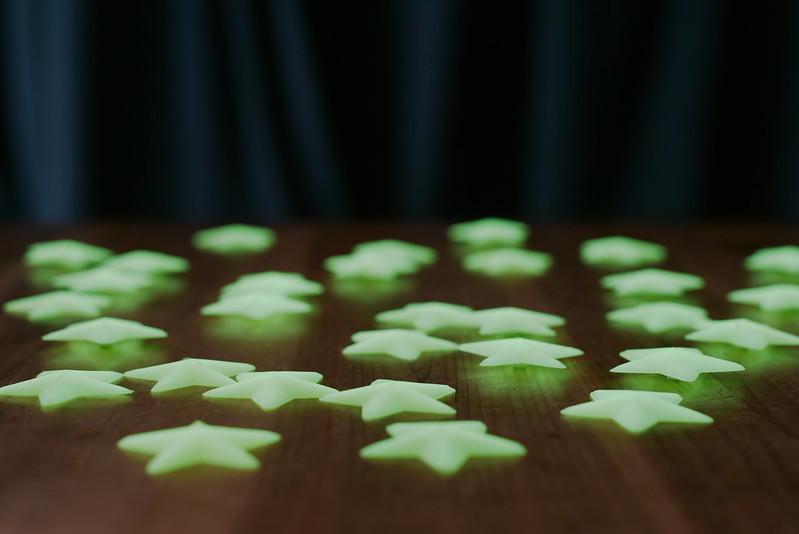Have you ever woken up with a bruise or cut you didn’t have when you went to bed the night before? If you’re a light sleeper, you might be certain that you didn’t get accidentally smacked by your slumbering partner or stepped on by the cat during the night. So how did it happen? I’m sure there’s usually a mundane explanation, but when it happens to me, I always wonder – only half-jokingly – where I went in my dreams and what I got up to.
I’ve been interested in dream interpretation for as long as I can remember. I’ve gone through phases of writing down my dreams first thing in the morning so I could remember and analyze them. As a teen, I’d check dream symbolism books out of the library. I moved on to interpreting dreams using literary analysis techniques. When I joined a mindfulness and meditation club, I learned a new dream interpretation method that I now like best for interpreting most dreams.
If you want to interpret your dreams, you will need to record them while they’re still fresh in your memory, which pretty much means “as soon as you wake up.” You can use whatever method works best for you: writing in a physical journal, typing on a computer, taking notes on your phone, making a voice recording, etc. Write or speak in the present tense. This will help you recall details and the order of events. Don’t be tempted to interpret or edit as you go along. Write down exactly what you recall without thinking about what it means or whether it “makes sense.” Include all the details you can remember. (The more frequently you record your dreams, the better you will become at remembering them.) Once you’ve recorded your dream, you can set it aside and interpret it whenever you want. Don’t wait too long, though; a dream is typically only relevant to what’s happening in your mind and your life around the time you had the dream.
Here is the method I find most useful for dream interpretation when the meaning of a dream isn’t immediately obvious. Treat every significant figure in the dream – especially persons, but also any objects that stand out as meaningful – as an aspect of yourself. Ask yourself, what aspect of me does this figure represent? What are they trying to tell me? How does this aspect of me interact with other aspects in my dream, and why? Ask these questions about each significant figure in the dream. I like this method because it keeps the focus on your own psyche, where dreams originate. It also challenges you to look beyond the literal interpretations of persons and objects, which can be an enlightening exercise.
While there is no one right way to interpret dreams, I recommend an approach like this over relying on predefined dream symbol meanings from a book. Everyone has their own complex, personal relationships with the persons, places, and objects that appear in their dreams. No set of supposedly universal meanings can tell you exactly what the figures in your dreams mean to you.
Building a practice of dream recall and interpretation gives you access to your subconscious mind. We sometimes struggle to know our own minds because layers of cultural messaging and social expectations get in the way, because the situation at hand is complicated or ambiguous, or simply because we’ve rarely bothered to engage in metacognition. Dream analysis is a tool you can use to gain some clarity and self-awareness you might not have had otherwise.
But what about dreams that contain messages, places, and persons you are convinced aren’t just aspects of your own psyche, but Other? The idea that dreams could bring us into contact with beings or wisdom that originates somewhere beyond ourselves is undoubtedly controversial in the modern world, but for most of Western history, dreams were understood to provide occasional access to truth, the future, and the Divine. As Sarah Stanbury writes in a note on her edition of Pearl – one of several medieval poems that feature dream-visions – “Dreams are conventional points of departure for many philosophical or political verse narratives (dream visions) in the Middle Ages. Although truth of dreams was much debated, majority opinion appears to have taken seriously their prophetic and revelatory potential.”
In his works that deal with dream-visions, like The Book of the Duchess and The Nun’s Priest’s Tale, Chaucer seems to use two different Middle English words for “dream” to make a distinction between true visions and dreams that are insignificant or false: “sweven,” which the Middle English Dictionary glosses as “a dream experienced in sleep; a dream-vision, prophetic dream”; and “drem.” (While the MED says that “drem” also means “a prophetic dream,” I agree with the note at the bottom of the page that argues, “I think Chaucer intends drem and sweven as contrasts… The gloss in sense 1.(a)…misses this subtlety.”)
Although Pearl, The Book of the Duchess and the Nun’s Priest’s Tale, etc. are works of fiction, they are almost certainly informed by the dream interpretation system detailed in Macrobius’s Commentarii in Somnium Scipionis (Commentary on Cicero’s Dream of Scipio), which was intended for real-world use. Macrobius, an early 5th century Roman writer (who was probably a pagan), prefaces his commentary on the Dream of Scipio with a discussion of different types of dreams, sorting them into types that are prophetic and worthy of interpretation, and those that have their origin in the dreamer’s own waking life. Macrobius based his system on the writing of Artemidorus, a Greek diviner and dream interpreter in the 2nd century AD. In turn, Artemidorus’s Oneirocritica (The Interpretation of Dreams) supposedly builds on the works of multiple predecessors.
The practice of taking dreams seriously and acknowledging their potential to bring the dreamer into contact with otherwordly guides, Divine wisdom, and the afterlife has a long history. When the Romantic movement – one of the early origin points of modern Paganism – reignited interest in the medieval and classical eras, dream interpretation again became popular with writers and thinkers. If you’re convinced you’ve had a dream that was more than merely "a fragment of an underdone potato," you’re in good company.
I’ve had only a handful of dreams that seemed to be more than just my psyche digesting the events of my waking life. Two were night terrors. I’ve only had the two, they were very different from each other, and in both cases I’m pretty sure I know exactly what they were all about. The others involved places or people that felt much more real than a standard dream. In the latter cases, I wanted badly to stay in the dream but I had the strong sense that I wasn’t supposed to be there; at least, not for long, or not yet. Just as I tried to exert some agency in the dream, I woke up. In those cases, I was left with a vivid memory of the dream and a lingering sense of longing. I have theories about what these dreams meant, but no firm conclusions.
If you’re interested in having more control over what happens in your dreams, there is an entire website devoted to the cultivation of lucid dreaming skills. I haven’t tried the methods detailed there but they look promising. My current dream project is simply to make sure I’m wearing shoes; I’ve had way too many dreams in which I was uncomfortably or inappropriately barefoot. Whether I’m exploring my innermost self, divining the future, or meeting guides and Gods, I’d really prefer to be properly dressed.





Comments
Post a Comment